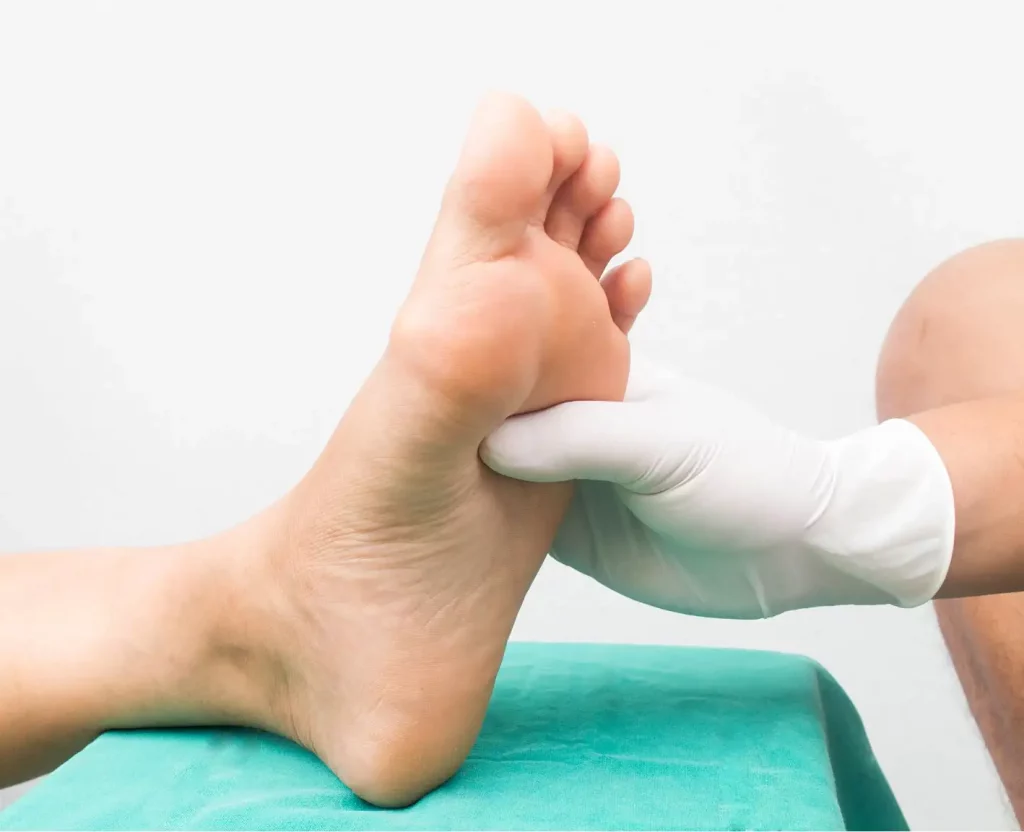- Connect Whatsapp
- +917012232608
- admin@careayu.com
Diabetic neuropathy treatment in Ayurveda

Ayurvedic treatment for fissure
May 8, 2022
Hearing loss treatment in Ayurveda
May 8, 2022Table of Contents
- Diabetic neuropathy treatment in Ayurveda – Introduction
- According to modern science
- Peripheral neuropathy (distal symmetric peripheral neuropathy):-
- Autonomic Neuropathy:
- Proximal neuropathy:
- Mononeuritis (focal neuropathy):
- Management of Diabetic Neuropathy
- Diabetic neuropathy treatment in Ayurveda – Panchakarma
- The following drugs are found very effective in the management of all types of diabetic
- Diet and lifestyle suggestions
Diabetic neuropathy treatment in Ayurveda – Introduction

It is a nerve-damaging disease that manifests itself due to diabetes affecting autonomic, sensory, and motor nervous systems. In majority of the cases the nerves in legs and feet are affected by this disease. Numerous issues are believed to be brought about by diabetic microvascular injury that includes tiny blood vessels supplying blood to nerves.
Moreover, the peripheral nerves that include motor and sensory neurons are also impaired. Ayurvedic literature explains karapadaha, suptata, and dourbalya as prameha padrava, which is closely linked to DN. Since there is no documented treatment in modern science, hence it is the need of hour to develop a competent Ayurvedic medicament that not only can cure the condition as well as also overcoming the negative implications.
It is mentioned under Diabetic neuropathy treatment in Ayurveda that Prameha and Vatarakta share a similar aetiology, prodromal symptoms, and outcomes. Excessive consumption of Katu (pungent) and Tikta (bitter) Rasa, as well as excessive walking and exercise in the treatment of Madhumeha, may all contribute to Vatarakta aetiology. Contingent upon which nerve(s) has been harmed, the signs and side effects will fluctuate. The two most common indication of autonomic neuropathy are blacking out during standing and Orthostatic Hypotension.
According to modern science
Diabetic neuropathy is categorized in to four different types and the manifestation or indication will be different based on the nerve that is injured.
Peripheral neuropathy (distal symmetric peripheral neuropathy):-
Peripheral nerves are the primary target of this neuropathy. First it affects the legs and feet after than arms and hands are targeted. The common indications for peripheral neuropathy are as follows:
- Loss of sensitivity or numbness towards pain.
- A prickling or burning sensation.
- Excruciating aches or spasms
- Enhanced sensitivity of touching.
- Severe foot complications for example ulcers, bone & joint pain, and various infections
Autonomic Neuropathy:
The autonomic nervous system regulates all organs of human body including bladder, sex organs, stomach, heart and eyes. Following are the indication or symptoms for this neuropathy:
• Extremely low level of blood sugar.
• Disorder related to bladder or bowels
• Difficulty in passing the stool.
• Changes in your eyes’ ability to shift from light to dark
• Reduced sexual arousal
Proximal neuropathy:
It is a very rare form of neuropathy and commonly known as diabetic polyradiculopathy or diabetic amyotrophy. This kind of nerve harm normally influences one side of your body and may seldom spread to the opposite side.
- Nerves in the thighs, hips, buttocks, and legs are frequently affected. It might also have an impact on the abdomen and chest.
- Thigh muscles that are eventually weak and diminishing
- Trouble getting up and seating down.
- Excruciating abdominal ache
Mononeuritis (focal neuropathy):
Mononeuropathy is divided into two types: cranial and peripheral. Damage to a single nerve is referred to as mononeuropathy. Symptoms of mononeuropathy include:
• Double vision or poor concentration
• A throbbing sensation at the back of one eye
• Paralysis on one side of the face.
• Experience numbness and prickling sensation in limbs
• Extreme weakness in the hands further worsening to complete loss of gripping ability.
Management of Diabetic Neuropathy
To minimise problems, Ayurvedic treatment for diabetic neuropathy must be well managed. Ayurvedic medications mentioned in Diabetic neuropathy treatment in Ayurveda have Pramehaghna (anti-diabetic) properties as well as Rasayana (nutritional pool improvement) and Ojovardhaka (immune booster) effects.
Ayurvedic medications, alone or in combination with contemporary treatment, can reduce the need for insulin and oral hypoglycemic drugs, prevent or delay long-term problems, and maintain overall health in old diabetics due to these features.
Paraesthesia, discomfort, and tingling sensations are all indicators of vata dosha involvement in diabetic neuropathy. The burning sensation is caused by pitta dosha vitiation
Diabetic neuropathy treatment in Ayurveda – Panchakarma
- Abhyangam: To enhance blood circulation, produce nerve stimulation, and relieve stress, the entire body is gently massaged with therapeutic oil. They primarily focus on the foot (Padabhyanga), which is frequently affected by neuropathy.
- Sirodhara: Shirodhara is the continual application of heated oils to the middle of the forehead for medicinal purposes. Shirodhara is a technique for calming the mind and nerve system. It has the ability to reduce mental and emotional tension while also facilitating the development of clarity and bliss.
- Ksheeradhoomam: It is a procedure that uses a unique sort of medicated steaming to treat difficulties with the nerve system and other neck issues.
- Pizhichil: It is a medicament that uses combination of oil and heat therapies in order to enhance blood circulation resulting in elimination of toxins. In Ayurveda, it is one of the primary aspects of panchkarma. Following a rejuvenating massage, the therapeutic oil is squeezed out of the cloth and applied to the patient’s body.
The following drugs are found very effective in the management of all types of diabetic
• Dashamooladi taila and Prasaranitaila – for use in the local area.
• Dashmula Ghana Vati600 mg divided into two doses
• Vasanta KusumakarRasa (250 mg divided into two doses)
• Yogendra Rasa200 mg, divided into two doses
• Shilajithvadi Louha – 500 milligrams divided into two doses
• Praval, Mukta, and Shukti Bhasma 500 mg in two divided doses
- ShivaGutika500 mg split into two doses
Diet and lifestyle suggestions
- Maintain a nutritious diet and avoid smoking.
- Reduce your alcohol consumption.
- Whole grains should be substituted with processed grains.
- Ensure that you don’t miss any meals.
- Consume a variety of fruits and vegetables.
- Sugar and fat intake should be kept to a minimum.
- Instead of large meals, eat smaller ones more regularly.

